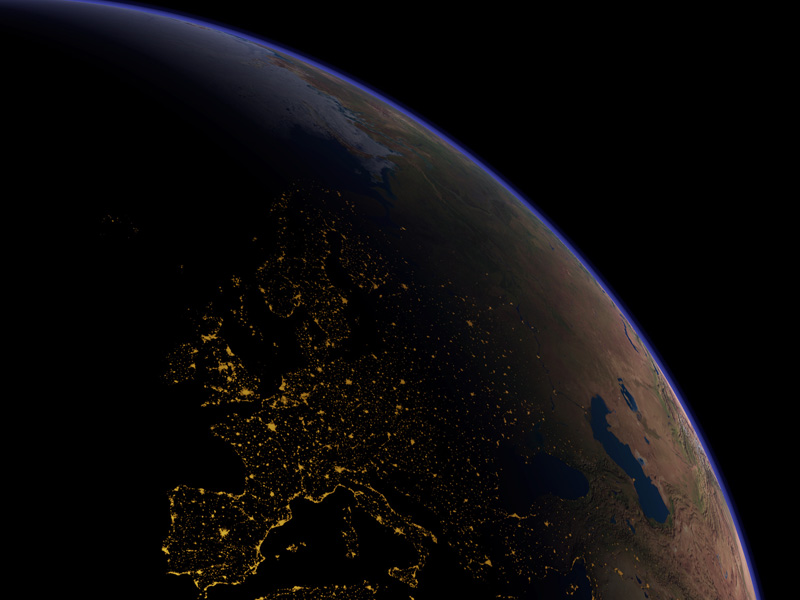
|
Credit & Copyright: Kevin M. Tildsley
Explanation:
Can you find your favorite European city?
The above digital fantasy
of
Europe
at Night is a digital composite of archived
satellite images taken
both during the day and night.
This image
is different from what an astronaut would see for reasons including a
complete lack of clouds and an
unrealistic exaggeration of lights and
contrasts.
Even so, the geography underlying the image is captivating.
Nighttime light
patterns have been accumulated from the
USAF
Defense Meteorological Satellite
Program (DMSP) Operational Linescan System.
|
January February March April May June July August September October November December |
| ||||||||||||||||||||||||||||||||||||||||||||||||
NASA Web Site Statements, Warnings, and Disclaimers
NASA Official: Jay Norris. Specific rights apply.
A service of: LHEA at NASA / GSFC
& Michigan Tech. U.
Based on Astronomy Picture
Of the Day
Publications with keywords: Europe
Publications with words: Europe
See also:
